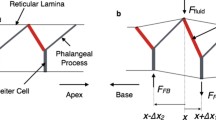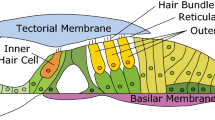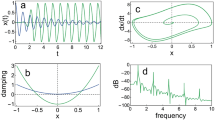Abstract
THE University of Missouri has recently issued a memoir by Prof. Max Meyer, in which an interesting, instructive, and suggestive attempt is made to explain the mechanism of the cochlea without having recourse to the application of the principle of sympathetic vibration, or rather without the assumption that there exists in the cochlea, in the form of the organ of Corti, a vast number of delicate structures tuned, as it were, to tones of different frequencies. Prof. Max Meyer does not base his views on experimental data; his paper is a purely theoretical discussion as to how the cochlea may act, if we make six fundamental assumptions, none of which can, at present at all events, be tested by direct examination or by direct experiment. His inquiry begins with the movements, in and out, of the stapes at the oval window. The tube filled owith fluid is divided into three compartments, the upper, the scala vestibuli, communicating at the apex of the cochlea with the scala tympani, at the foot of which we find the round window, while between the two scalae we have the cochlear duct, or scala intermedia, composed, in its turn, on one side by the basilar membrane, on which rests the organ of Corti, and on the other by Reissner's membrane. When the base of the stapes is pushed inwards at the base of the scala vestibuli, pressure is communicated to the fluid in the scala; (the scalae communicating at the apex of the cochlea by a little opening, the helicotrema), and the membrane of the round window passes outwardst towards the tympanic cavity. It is ogenerally held that with such pressure the fluid in the oscalse moves as a whole, and that pressure is communicated to the whole length of the scala intermedia, and especially to the basilar membrane, and that in this way the nerve-endings in Corti's organ are also submitted to pressure. The question then arises, is there any differentiating mechanism in the basilar membrane or in Corti's organ for tones of different frequencies, or, in other words, have we here an organ capable of analysis? Some deny any such property, while others, since the views of Helmholtz were first promulgated, are of opinion that there does exist an analysing mechanism.
Similar content being viewed by others
References
"An Introduction to the Mechanics of the Inner Ear." By Prof. Max Meyer . Science Series of the University of Missouri Studies. Pp. 140. (1907). Price 1 dollar.
Rights and permissions
About this article
Cite this article
McKENDRICK, J. The Mechanics of the Inner Ear . Nature 78, 114–115 (1908). https://doi.org/10.1038/078114a0
Issue Date:
DOI: https://doi.org/10.1038/078114a0
- Springer Nature Limited





